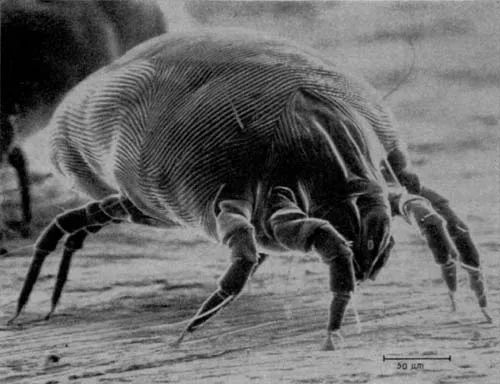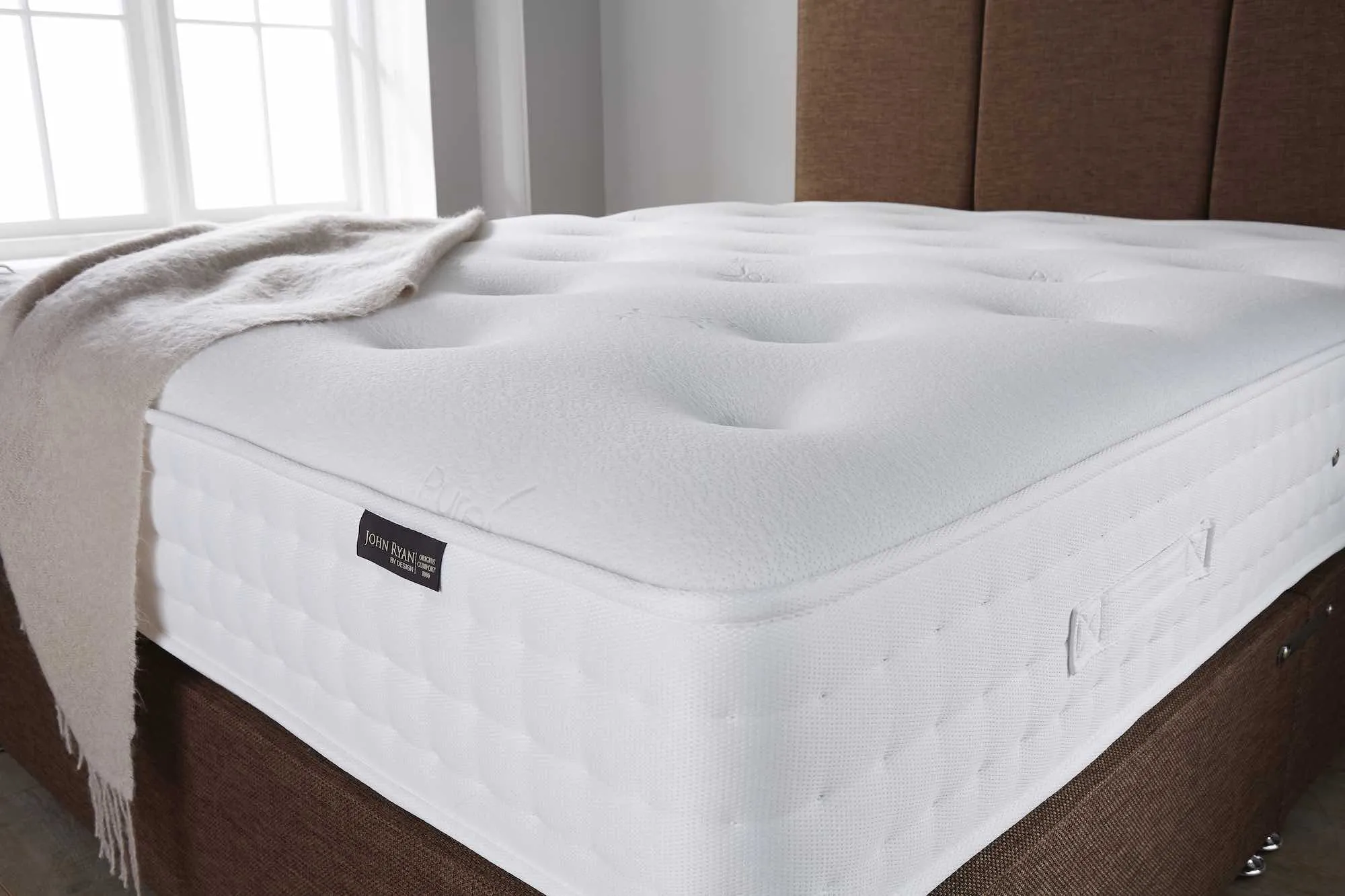Mattress Care
July 2020Dust mites in mattresses: How to fix
Updated 2020: If you’re concerned about dust mites in your mattress then this article will help to dispel some of the myths. Dust mites are one of the main contenders that threaten a healthy bedroom, with the other one being mould. If you’re wanting to ensure your bedroom is a haven for peace and well being then we have some helpful mattress tips for you.

Keeping your bedroom clean and healthy is a great step to ensuring a perfect night’s sleep (alongside choosing the right mattress). Let’s have a look at how you can prevent dust mites and allergies from ruining a good night’s sleep.
Advice on dust mites in the bedroom
- What is a dust mite?
- Which mattresses are allergy-free?
- Typical allergies caused by dust mites
- What can I do to stop dust mites?
What is a dust mite?
The dust mite measures 0.25–0.3 millimetres in length and has 8 legs. Male dust mites live for 10-19 days, whilst the female can live up to 70 days and lay 60-100 eggs during her final 5 weeks of life. It’s the faecal particles and dead exoskeletons that are the subject of debate. They depend on water and moisture to survive, so any material that can retain moisture will provide an environment for dust mites to live in.
Dust mites live in fabrics and materials where dead skin, moisture and heat are present. So an unloved and uncared for mattress in the bedroom is a prime breeding ground for dust mites. Dust mites can cause all sorts of allergic reactions, which we’ll discuss below. If you want to know which mattresses are the best options to reduce dust mites then we need to understand a bit more about allergies in the bedroom.
Which mattresses are allergy-free?
There are many blog posts about allergy-free mattresses and a lot of fake advice out there. Allergies are caused when the body reacts to a substance that it considers to be a threat to your immune system. With mattresses, this can be a type of fibre, material or debris (i.e. dust mite waste).
The mattress industry lists any synthetic material as ‘anti-allergen’ or ‘hypoallergenic’, as it doesn’t contain any organic matter like a natural fibre. However, you need to take care, as this only applies to synthetic material in a lab. As soon as you get it home, add bedding and cover it, the hypoallergenic properties are then gone amid a mixture of sweat, dead skin, dust and other particles!

Examples of Allergy-Free mattress Material
- Polyester
- White fibre (synthetic)
- Memory foam (though care needs to be taken due to its heat retentive properties causing night sweats)
Mattress brands have marketed that memory foam is “anti-allergen”. We would argue that, whilst there is some truth to this (i.e. when it’s held in a sterile lab), it is not just the mattress where dust mites take up residence, but bedding, sheets and even clothes. So all you’re doing is minimising the dust mites in your mattress. Given the figures that 100-500 can live in a 1gm of dust, you may have already established that you’re in a losing battle!!
You’re far better with a thorough and regular mattress cleaning routine instead of opting for low-quality chemically-made foams. This means you can choose more natural fibre mattresses and get a far better night’s sleep!
Typical Allergies to Dust Mites
- Itchiness
- Sneezing
- Inflamed or infected eczema skin
- Watering/reddening of the eye(s)
- Sneezing repeatedly and or frequent sneezing.
What can I do to stop dust mites
Quite simply you can’t ever fully remove dust mites. The only way to reduce dust mites in the bedroom is following the next three steps.
- Wash your bedding weekly on a 60-degree wash
- Tumble dry your bedding, which will kill the dust mites
- Use some specialist anti-dust mite covers or fitted mattress covers which help limit them to the top surface of the mattress.
The drawback is that these steps are only as effective as the day-to-day routine you use to keep bedding clean. As you can imagine, tumble drying your bedding and sheets every day to try and keep numbers to a minimum is highly troublesome. Carpets also act as a breeding ground, and fabric sofas too, so unless you put down wooden or laminate floors and sit on hard wooden chairs the chances are you’re going to come into contact with dust mites at some point!

Our only recommendation is to have a robust mattress cleaning regime, seek medical help if the allergens are becoming troublesome, and to do the best you can with it. Most people won’t even notice a dust mite problem. Again, use your judgement to work out whether the anti-allergen is really a selling point for you, or just another gimmick!
Regular ventilation and turning of your mattress can help keep your bedroom fresh
A hot wash of your bedding on a weekly basis can help reduce dust mites


Summary
Trying to eradicate dust mites is, in reality, a losing battle. What will help reduce the lifecycle and impacts of dust mites are a robust cleaning regime. Clean covers replaced frequently and mattress maintenance will help reduce any impacts. The same can be said for mouldy mattresses, ensuring that rooms are not humid and have good ventilation should help keep your mattress in perfect shape. If you need more advice please give us a call on 0161 437 4419.

Dreaming of the perfect nights sleep?

Ask us a question
There are over 6000 questions and answers submitted by you on all questions about mattresses and bed problems. Enter a keyword such as Vi Spring, John Lewis beds, bad back or Memory Foam and see if your question has already been answered.
If you can’t find an answer in knowledge hub, ask a new question. We aim to respond to all questions within one working day.
Newsletter
Enter your email to join our newsletter. We’ll send you occasional news and mattress expertise.
